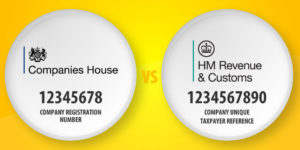A non-UK resident shareholder who receives UK dividends must declare this income by filing a tax return through Self Assessment. This is the case with almost all sources of income arising from UK savings and investments, including dividend payments from UK companies.
If you’re not a resident of the UK for the entire tax year in which you receive this income, you can choose whether to pay tax in the UK or your country of residence. Either way, you must declare dividends by completing a tax return for HM Revenue & Customs (HMRC).
Declaring UK dividends
Most UK-derived savings and investments income, such as dividends from shares, is taxable in the UK if you are resident here for any part of the relevant tax year. The only exceptions are:
- income derived from UK property
- investment income that is connected to a UK trade through a permanent establishment
However, if you are classed as a non-UK resident under the Statutory Residence Test (SRT), the UK tax you’ll pay to HMRC on all of your income can’t be more than:
- the amount of UK tax that would be due on income (except for ‘disregarded income’) but before the deduction of any personal allowances, plus
- any UK tax already deducted at source from the ‘disregarded income’
This rule on non-resident taxation applies to all types of ‘disregarded income’, including:
- interest and alternative finance receipts from banks and building societies
- dividends from UK-registered companies
- income from unit trusts
- income from National Savings and Investments (NS&I)
- profits from public revenue dividends
- profits or gains from transactions in deposits
- certain social security benefits (e.g. the State Pension or Bereavement Allowance)
- taxable income from purchased life annuities, except for annuities under personal pension schemes
By completing a Self Assessment tax return (form SA100), along with supplementary page SA109 Residence, remittance basis etc to declare that you are a non-UK resident shareholder, HMRC will include your dividends in your Self Assessment calculation as disregarded income for UK tax purposes.
Working out your tax liability
When you complete your tax return online, HMRC’s system will perform two calculations based on your entries. One calculation will include the disregarded income, and the other will omit it. The lower tax calculation is what you owe. Any tax above that sum can be repaid to you.
- How to Pay Myself from a Limited Company
- VAT registration for UK companies with non-resident directors
- New tax year 2025-26: key changes for businesses
Alternatively, you can calculate and record your tax liability yourself using HMRC’s Tax Calculation Summary (SA110) supplementary pages and notes. To do so, you’ll need to compare the amount of UK tax that would otherwise be due with the amount of tax actually due, as shown by HMRC’s helpsheet HS300 Non-residents and investment income. This is to ensure you don’t pay too much tax.
Working out your tax liability as a non-UK resident shareholder can be complex. Under certain circumstances, you may benefit from paying tax on disregarded income as if you were a UK resident. Therefore, we advise appointing an accountant or tax specialist who has experience dealing with non-resident tax planning.
Working out your residency status
Whether you are a UK resident or a non-UK resident typically depends on how many days you spend in the UK during a tax year. The tax year runs from 6 April in one year until 5 April the following year. For example, 6 April 2025 to 5 April 2026.
You will be classed as a UK resident for tax purposes if:
- you satisfy one or more of the automatic UK tests or the sufficient ties test, and
- you don’t satisfy any of the automatic overseas tests
If you don’t meet both of these Statutory Residence Test (STR) conditions, you will be classed as a non-UK resident shareholder for tax purposes.
The UK tests
Under the automatic UK tests, you may be resident for tax purposes if:
- you spent at least 183 days in the UK during a tax year
- your only home was situated in the UK for at least 91 days in a row, and you visited or stayed in that home for at least 30 days of the tax year
- you worked in the UK full-time for any period of 365 days, and at least one of those days was in the tax year for which you are checking your status
You may also be resident under the ties test if you spent a certain number of days in the UK and have additional ties here (e.g. through work or family).
The overseas tests
Typically, you are a non-UK resident for tax purposes if:
- you spent fewer than 16 days in the UK (or 46 days if you’ve not been a resident of the UK for the previous three tax years), or
- you worked full-time overseas (at least 35 hours per week on average) and spent fewer than 91 days in the UK, with no more than 30 of those days spent working
Refer to HMRC’s Statutory Residence Test guidance to find out more. You can also use GOV.UK’s residence status checker to get an indication of whether or not you are a UK resident in a particular tax year.
Does split-year treatment apply to UK dividends?
Split-year treatment usually applies if you move to or from the UK part-way through the tax year. In this situation, you are treated as becoming a non-UK resident on the date you leave the UK. Consequently, the tax year is split in two: a UK-resident part and a non-UK-resident part.
Unfortunately, UK-derived savings and investments, including UK dividends, do not qualify for split-year treatment. The rules on disregarding these types of income from UK taxation only apply if you are a non-UK resident shareholder for the entire tax year in which you receive the dividend income.
Moreover, under the temporary non-residence rules, you must remain non-resident for more than five full tax years. Otherwise, your UK dividends will become taxable in the UK.
How to file a Self Assessment tax return as a non-UK resident shareholder
To declare your UK dividends on a Self Assessment tax return, you must first register for Self Assessment with HMRC. You can do this online by:
- Creating a Government Gateway user ID and password
- Signing in to your new personal tax account
- Completing the registration form
- Submitting your completed application to HMRC
Within approximately 21 days, you should receive two letters from HMRC. One will contain your 12-digit activation code, and the other will contain your 10-digit Unique Taxpayer Reference (UTR).
You’ll use the activation code to activate your new tax account. The UTR is used to identify you for Self Assessment tax purposes, so you’ll need to provide this whenever you deal with HMRC.
If you are unable to use HMRC’s online registration service for any reason, you can register for Self Assessment by filling in form SA1 and sending it by post.
The registration deadline is 5 October after the end of the tax year in which you receive your dividend income. For example, if you receive UK dividends at any point in the 2025-26 tax year (6 April 2025 to 5 April 2026), you must register for Self Assessment by midnight on 5 October 2026.
To see how the online registration process works and what’s required, we recommend watching HMRC’s YouTube video on how to register for Self Assessment.
Completing your tax return
You can complete a Self-Assessment tax return online using commercial Self-Assessment software that supports SA109 reporting (this may appear as a ‘remittance basis’ or ‘residence’ section). Alternatively, you can file on paper or appoint a tax professional to report your UK income for you.
If you choose to file online, your software will guide you through the process, which involves:
- Providing your personal details – name, address, and date of birth
- Tailoring your return – answer the questions on the screen to determine which parts of the tax return you need to complete
- Completing the main section of the tax return by providing details of the following (where applicable): income from UK dividends and interest, payments to registered pension schemes and overseas pension schemes, other UK income not included on supplementary pages, and the total amount of allowable expenses
- Filling in the ‘Employment (SA102)‘ supplementary page if you also receive a director’s salary from the UK company
- Completing the ‘Residence, remittance basis, etc (SA109)’ supplementary page to declare that you’re a non-UK resident shareholder. You can also claim any personal allowances you are entitled to
- Completing any other Self Assessment supplementary pages that apply to you, depending on your particular circumstances (e.g. to declare capital gains or income from UK property)
- Reviewing the information you’ve entered on your tax return – at this stage, you can go back and correct any errors or oversights, if applicable
- Viewing your tax calculation – the amount of tax you owe, if any, will be available to view at this point
- Saving a copy of your completed tax return for your records
- Submitting your tax return to HMRC
Upon successful delivery, you should receive an online message to confirm receipt of your tax return. Shortly thereafter, you should also receive a confirmation email.
Throughout the process of completing your online return, prompts and links should be available to help you complete each section. You can also refer to HMRC’s guidance on completing a Self Assessment tax return.
Sending your Self Assessment tax return by post
If you cannot complete and file your Self Assessment tax return using software filing, you can post it instead. You can download the paper version of the SA100 tax return form and supplementary pages online.
Once complete, send your paper tax return to HMRC at the following address:
HM Revenue and Customs
Benton Park View
Newcastle Upon Tyne
NE98 1ZZ
United Kingdom
To avoid a late filing penalty, allow sufficient time for your return to reach HMRC. For your own peace of mind, you should also send it by recorded delivery.
Self Assessment filing and payment deadlines
You have a number of months after the end of the tax year to file your Self Assessment tax return with HMRC. However, there are different filing deadlines for online and paper tax returns:
- Midnight on 31 October – paper tax return
- Midnight on 31 January – online tax return
For example, to declare UK dividends earned in the 2025-26 tax year, you must send your Self Assessment tax return to HMRC by:
- 31 October 2026 – if you’re filing a tax return on paper
- 31 January 2027 – if you’re filing a tax return online
If you owe any tax, you must pay your Self Assessment bill by midnight on 31 January. This is the same date as the online filing deadline.
Thanks for reading
Tax and reporting requirements as a non-UK resident shareholder can be complex. For this reason, we always recommend seeking professional advice and assistance from an experienced accountant or tax specialist. Doing so will ensure that you’re following the rules and paying the right amount of tax, either in the UK or your country of residence.
If you have any questions about this post, please comment below. However, be aware that we do not offer tax or accounting advice. Our posts are for information purposes only. For more limited company guidance and small business advice, explore the 1st Formations Blog.
Please note that the information provided in this article is for general informational purposes only and does not constitute legal, tax, or professional advice. While our aim is that the content is accurate and up to date, it should not be relied upon as a substitute for tailored advice from qualified professionals. We strongly recommend that you seek independent legal and tax advice specific to your circumstances before acting on any information contained in this article. We accept no responsibility or liability for any loss or damage that may result from your reliance on the information provided in this article. Use of the information contained in this article is entirely at your own risk.














Join The Discussion
Comments (2)
Though you mention the SA1 form for people unable to register on the Government Gateway, I believe this is the case for all non-residents, isn’t it? As you need an National Insurance number to register, which is only available to UK residents.
Hi Steven,
Thank you for your comment and feedback. We will actively change this blog post to make this clearer.
Some non-residents will have National Insurance numbers (i.e. expats)
However, we will have this udated shortly!
If you have any further queries, please do let us know.
Kind regards,
The 1st Formations Team.